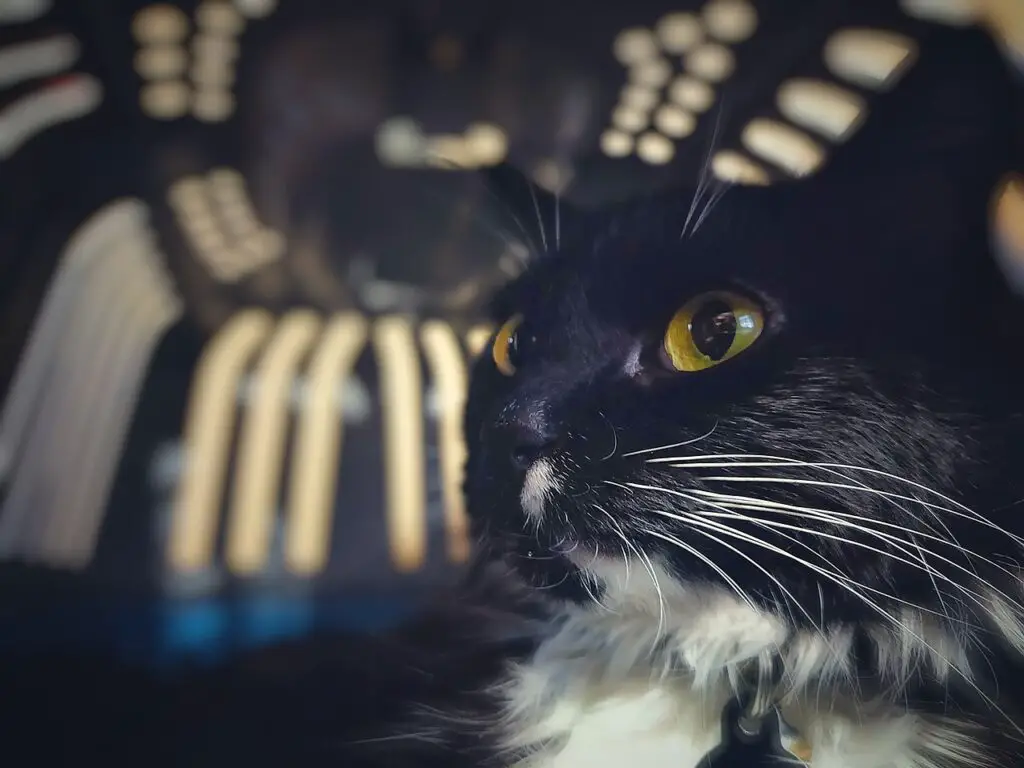We hope you like the products we recommend! Just so you know this post contains affiliate links and I will be compensated if you make a purchase after clicking our links.
Cats are odd creatures.
You spend a small fortune finding the most comfortable and most elegant feline bed available, but your fur baby prefers sleeping in the bathroom sink, on a rusted pipe or in her plastic carrier. Oh no. One of the reasons that we love cats so much is how weird their behaviour often seems.
Recently, we wrote about why cats sleep between your legs when you’re in bed and why they cry like babies at night. It opened us up to all sorts of strange personality traits that cats display. We could write a post a day for the rest of our lives and still be none the wiser about what runs through their furry little heads.
For example, last weekend, our cat was missing from her favorite afternoon napping spot. We found her eventually. And it became the inspiration for this post: why is my cat sleeping in her carrier?
My Cat Loves Her Carrier
This is a very pleasant post to write.
Sometimes a cat’s behaviour can be concerning. We may recommend effort on the owner’s part to solve the problem or suggest consulting a veterinarian for advice. A cat sleeping in her carrier is nothing to worry about. Some owners (the ones with scratches on their hands and gray in their hair) will be very jealous of anyone whose cat is that calm and comfortable in one. Getting pets into carriers whether it’s for a vet’s appointment, the groomer or a cattery can be the stuff of nightmares.
Why Is My Cat Sleeping in Her Carrier?
Cats like small spaces.
They feel safe and secure when there’s not much room and when there’s only a single-entry point. Carriers tend to let in less light too so it creates an alluring place to lie down. It’s a way of hiding from predators in a place where they can’t be startled.
Often cats come to associate carriers with visits to unpleasant places like the veterinarian or a cattery. It could be your cat has never had a visceral response to this and doesn’t associate the box with bad memories. They may have ‘rediscovered’ the carrier on their terms and scented it so that is no longer unfamiliar and scary. For some, the terror of a veterinarian ended when they got into the carrier to go home and that may be the overriding association it has: relief and security.
Our cat has always loved her carrier. It’s probably because she’s so nosy that any fear at going outside the house in it is beaten by the breadth of her curiosity.
Cats also like sitting in places that have visible boundaries. It’s why they’ll often sit on pieces of paper or flattened boxes. The carrier has a clearly defined space with edges they can sit between.
You may also find that in high-traffic homes with other animals, young children or lots of walking around that carriers can are a sanctuary from the passing legs and noise of the outside world. Haven’t many of us wished for a place to hide just a moment when things get hectic?
Whatever the reason there’s nothing to be concerned about. It’s quite sweet. You may find the cat moves onto a new spot within a few weeks. Ours often does.
Buying a New Carrier
One thing that may be annoying is that some carriers are built for utility rather than design or appearance. You may not want an ugly carrier lying around your house in full view, so we’ll include some more attractive options available on Amazon that you’re welcome to jump off for and explore.
But you know how cats are…there’s no guarentee they’ll use the next one.
We are an Amazon affiliate so if you buy something using one of our links, we may make a small commission at no cost to you.
We’ve also written cat carrier-related posts in the past which you may find interesting and we’ll link to these below.
Last update on 2024-04-23 / Affiliate links / Images from Amazon Product Advertising API
